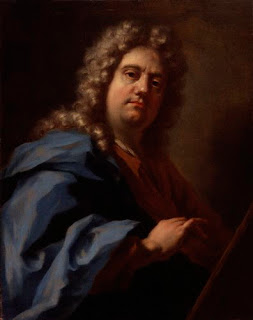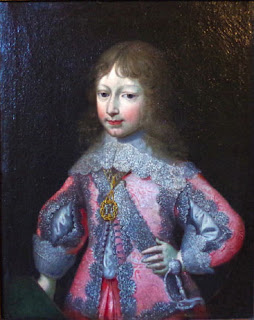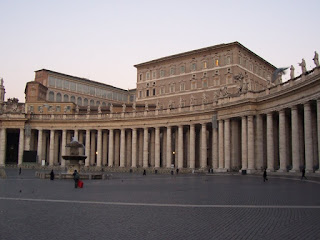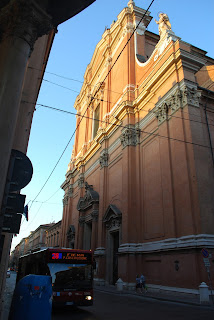Venetian artist who made mark in England
 |
| Giovanni Antonio Pellegrini's self-portrait, painted in about 1717 |
He played a major part in the spread of the Venetian style of large-scale decorative painting in northern Europe, working in Austria, England, France, Germany, and the Netherlands.
With a style that had influences of Renaissance artist Paolo Veronese and the Baroque painters Pietro da Cortona and Luca Giordano, he is considered an important predecessor of Giovanni Battista Tiepolo in the development of Venetian art.
A pupil of the Milanese painter Paolo Pagani, Pellegrini began travelling while still a teenager, accompanying Pagano to Moravia and Vienna.
After a period studying in Rome, he returned to Venice and married Angela Carriera, the sister of the portraitist Rosalba Carriera.
Soon afterwards, he accepted the commission to decorate the dome above the staircase at the Scuola Grande di San Rocco in 1709.
Pellegrini spent a significant part of his career in England, where he was invited, along with Marco Ricci, the nephew of Sebastiano Ricci, by Charles Montagu, the future Duke of Manchester. He and Ricci were the first Venetians to work in England.
 |
| A copy of Pellegrini's original work in the reconstructed dome of Castle Howard in Yorkshire |
His paintings in the dome at Castle Howard in Yorkshire were unfortunately largely destroyed in a fire in 1940.
In London he worked at 31 St James's Square for the Duke of Portland, and became a director of Sir Godfrey Kneller's Academy in London in 1711.
He submitted designs for decorating the interior dome of the new St Paul's Cathedral, and is said to have been Christopher Wren's favourite painter. However, he did not win the commission, losing out to Sir James Thornhill.
Pellegrini subsequently travelled through Germany and the Netherlands on his way back to Italy.
He completed works in many European cities, including Düsseldorf, The Hague, Prague, Dresden, Vienna and Paris.
Pellegrini died in Venice in November 1741.
 |
| The Ospedale degli Incurabili, which houses the Accademia di Belle Arti in Venice |
Pellegrini is thought to have lived in the Dorsodoro sestriere of Venice, in which the Accademia di Belle Arti di Venezia was founded in September 1750. Giovanni Battista Tiepolo became the first president. The academy was at first housed in a room on the upper floor of the Fonteghetto della Farina, a flour warehouse and market on the Grand Canal, close to Piazza San Marco.
 |
| The facade of the historic Scuola Grande di San Rocco |
The Scuola Grande di San Rocco is a lay confraternity founded in 1478, named after San Rocco, who was popularly regarded as offering protection against the plague. It quickly became the richest Scuola of the city. Jacopo Tintoretto was engaged to produce a large number of paintings to decorate the walls and ceilings, which included what is regarded as his celebrated pictorial cycle illustrating episodes from the New and Old Testaments. More than over 60 paintings are preserved in their original setting in a building that has undergone very little alteration since its construction.
More reading:
The brilliant miniatures of Rosalba Carriera
Pietro da Cortona - outstanding exponent of Baroque
Why Luca Giordano was renowned as a fast worker
Also on this day:
1945: Brazilian soldiers liberate an Italian town
1987: The birth of tennis champion Sara Errani
Home
















